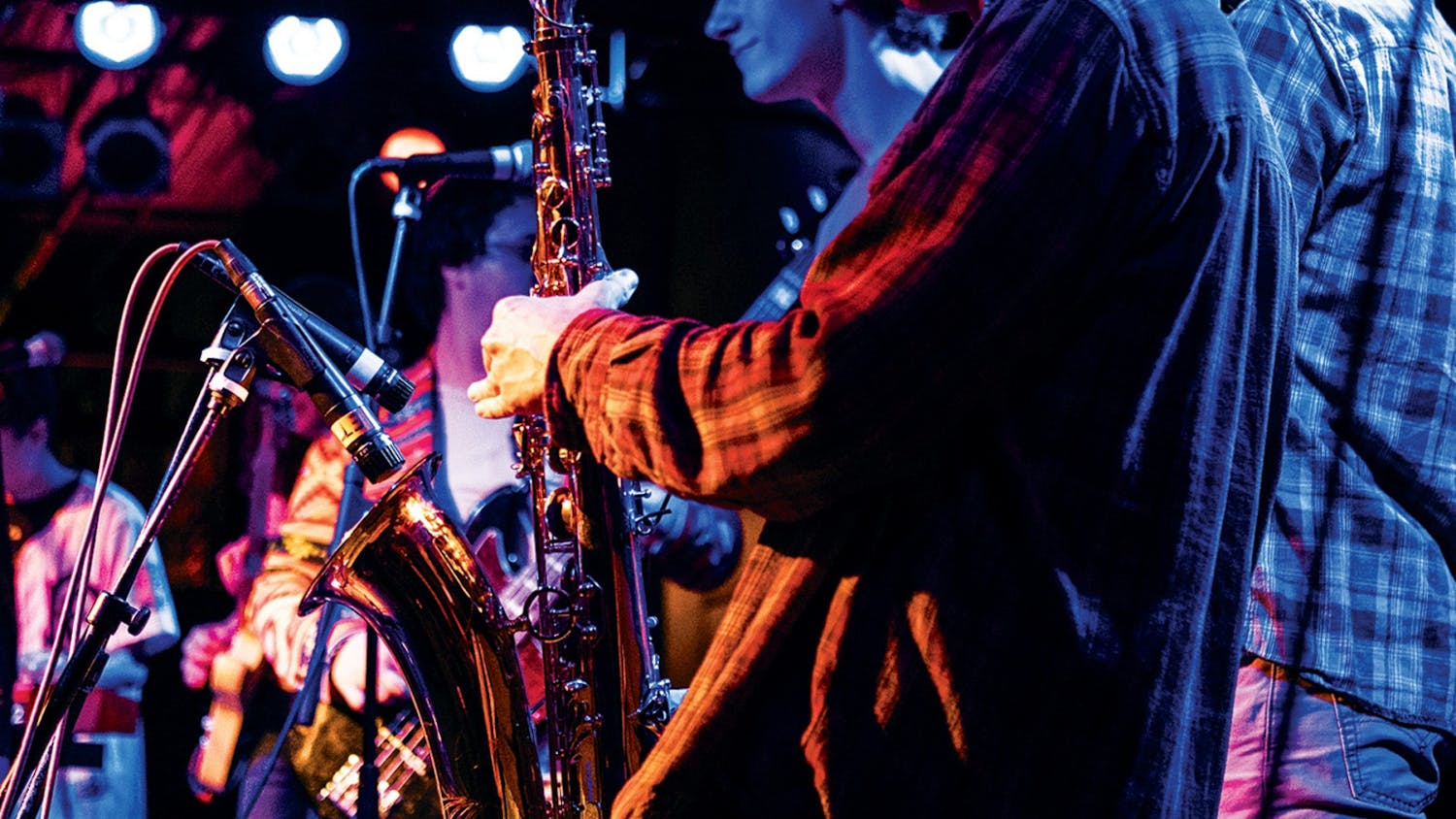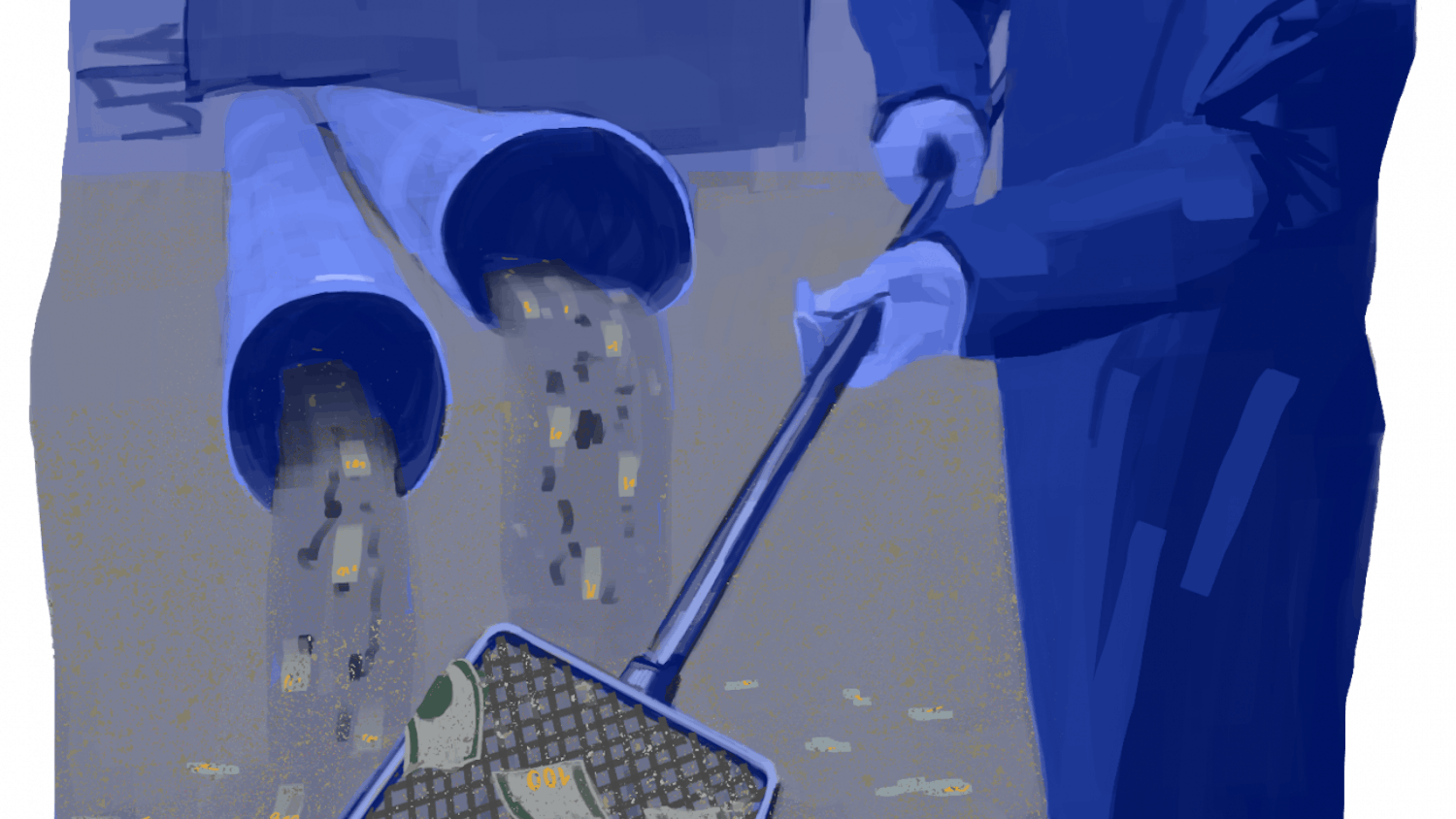"Ditch the workout, join the party!"
This is the mantra of Zumba, a type of dance aerobics and one of the most popular physical education classes Brown offers.
The saying could apply to all the alternatives the Department of Physical Education and Campus Recreation offers to endless miles on a treadmill's belt — an array of group workouts and sports, dance and martial arts classes taught by about 40 instructors.
But for about 2,700 students enrolled in their classes, the double life their instructors lead may come as a surprise.
The instructors are an eclectic mix of professional trainers, professors and undergraduates — even including experienced coaches such as Shay Lynch, who was an assistant coach for Brown's men's and women's squash teams for 20 years. After retiring at the end of last year, Lynch did anything but give up the game and instead continues to teach squash and tennis to beginners and intermediate-level players in Brown's PE classes.
During varsity practices, Lynch said, the emphasis is on "getting ready to beat Harvard and win matches" and on improving mental preparedness to supplement the skill varsity athletes already have. But in his PE classes? There's "a lot more laugther," he said.
From brains to bikes
Senior Lecturer in Neuroscience John Stein connects his workout to his other passions — for him, human physiology. Stein, who has biked seriously for 17 years, teaches both spinning classes and BIOL0800: "Principles of Physiology."
For someone who "enjoys teaching in general," as Stein does, leading a PE class is a chance to try a "different type of teaching" — one that replaces lectures and slides with "music and exercise," he said.
Still, his seemingly different interests intersect. When teaching physiology, professors always "use exercise as the extreme example," he said. "Exercise puts stress on the body, but not the negative type."
In his spinning class, Stein does the reverse too: He goes into the physiology behind the workout, explaining topics such as the body's switch from using aerobic to anaerobic energy during a workout. He also creates custom playlists to accompany his classes, drawing on his experience working as a disc jockey in college.
While seeing their neuro professor on a bike instead of at a podium may be a shock for some students, Stein thinks most don't even realize it's him at first. In time, Stein said he dreams of bringing together the two types of classes he teaches, perhaps developing a first-year seminar that would combine the study of exercise with actual participation in fitness programs.
Exercising ‘another part of themselves'
An assistant professor of art and visual culture at Rutgers University, Tanya Sheehan PhD '05 spends half her week in New Jersey. But when she comes home to Providence, she exchanges Degas' "The Dance Class" for the real thing, teaching hip-hop and jazz funk at Brown.
While Sheehan was a graduate student here, the University only offered ballet for those interested in dance, she said. She proposed a hip-hop class in 2000 — it was "what students really wanted to take," especially those without prior experience in dance, she had found.
Sheehan, who had run a summer dance program, brought her knowledge to the classes she began teaching at Brown. Her hip-hop classes were extremely popular, she said, drawing multiple sections with 40 people each.
Now she only teaches one section of about 20 people on the weekends, she said. Sheehan thinks the class is so popular because it's a fun workout with direct results: Students learn moves in class, then show them off later that evening, she said.
"People surprise themselves," she said, with how much they improve.
It's good for students to "challenge themselves outside of their comfort zone," Sheehan said, especially when they are so focused on their work.
"Grad students especially don't do a lot of extracurricular activities," she said. Dance classes give them the chance to "exercise another part of themselves — the mind in relationship to body and emotion."
Learning Latin rhythms
A typical Zumba class, as taught by Sadie Kurzban '12, is also all about body and emotion — it's more like a full-on dance party than the average aerobics class. Kurzban keeps the room lively and lighthearted, cracking jokes and making the 50-minute class "fly by," said Sam Karshenboym '12, a Zumba devotee.
Kurzban grew up in Miami, surrounded by Latin dance, and has been going to the gym regularly since the age of 10. Zumba, with its dual emphasis on fitness and Latin-inspired moves, fit naturally into her interests.
Kurzban first discovered Zumba in 10th grade and was immediately hooked, she said. By her senior year of high school, she was substitute-teaching her class, and earned her certifications as a personal trainer and Zumba instructor the summer before college.
When Kurzban came to college, she also brought Zumba to Brown — and when she taught the class her freshman year, it was immediately over-enrolled, she said.
Zumba "should feel like dancing with friends," she said. "You're having a blast, but you walk out burning 600 calories."
"It helps your heart and muscles," Kurzban said, adding that she thinks that "not enough kids at Brown get enough exercise."
Students started approaching Kurzban for advice on how to best tone different muscle groups, and in response she created a second class to help students build their muscle strength. The class, "Brazilian Sculpt," Kurzban said, works on students' "muscular endurance and flexibility" to Brazilian music — with a focus on the "stereotypically Brazilian areas: sexy abs and super strong legs and glutes."
As Brown's only Zumba instructor, Kurzban teaches four sessions of the dance class and two sections of Brazilian sculpt. "For one hour each day, I don't have to worry about anything else," she said. "I leave whatever else is going on and go in with super high energy."
Kurzban said she plans to expand Zumba beyond Brown's campus by combining her "love for working out" with her "passion for helping people who don't have a lot." Next semester, she will begin teaching Zumba to students in local public high schools.
"Rising obesity strongly correlates with lower incomes," Kurzban said, and by encouraging kids to work out, she hopes to help them with weight loss and with developing "motivation and confidence in general."




